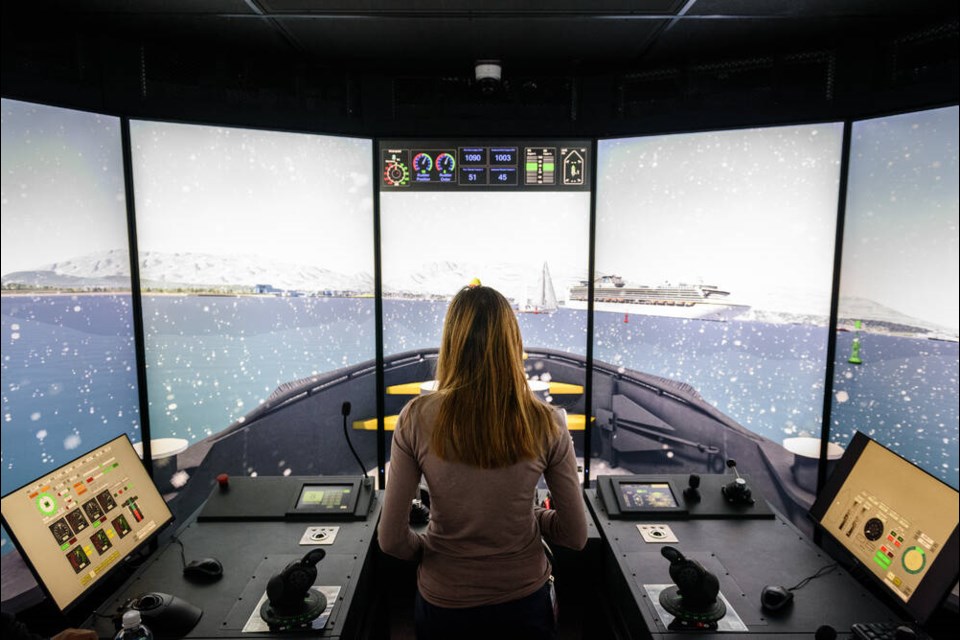When men who work on the waterfront first see Connie Leo hooking up the massive hoses that carry fuel oil from her barge to a shoreside terminal, there’s likely a moment of surprise.
Leo, who stands just 5’1”, is one of only a handful of women currently working in the marine industry on the B.C. coast.
As an oil barge operator, Leo is even rarer. “There is only one of me, really,” she says.
Being a woman working in a male-dominated field isn’t without its challenges, says Leo.
“It’s taken an adjustment for a lot of people,” she said – particularly when it’s come to dealing with crews aboard some deep-sea vessels, who come from places in the globe where seeing a woman do that work is even rarer.
In Leo’s case, seeking work on the water was a natural extension of her time growing up around the ocean in her native Australia, then later working as a lifeguard.
In Canada, Leo found herself working for a marine training institute in B.C., which showed her the kinds of opportunities possible in the marine industry.
“So, I decided to dive right in and get started,” she said. “I did my marine training courses and one of them was the ticket that enables me to do the work that I’m currently doing.”
Leo, who currently works for Seaspan Marine, is a rarity now, but she may be less of one in the future.
Of the 290 people who currently work as deckhands, masters and mates on tugboats and barges for the company, only six are women.
In the past, not many women have considered a career in what has traditionally been man’s line of work.
But with more than 40 per cent of the current workforce expected to retire in next decade, Seaspan is actively looking to expand the pool of people who might consider a career in the industry.
On Tuesday, Seaspan Marine held an open house aimed at introducing women to the types of careers that are possible. The event also aimed to connect potential workers to those with experience in the industry.
Among the highlights was a chance to try out Seaspan’s state-of-the-art tugboat simulator, used for current employees at the company to upgrade their skills.
Jessica McHaffie, manager of marine personnel for Seaspan, said there’s no reason women can’t work on the water or on the shore end of the marine industry.
“Anybody can do it,” she said. “We have people of all shapes and sizes. Sometimes women don’t think they’re strong enough. You just have to want to do it.”
Some of the more physical work involved could include hooking and unhooking barges from tow lines, hooking up fuel hoses and climbing ladders on to barges.
Most jobs in the marine industry are regulated by Transport Canada, which means someone wanting to start in the field must take specific training and licensing courses as well as pass exams and spend a certain number of hours working on the water.
Anyone working on a barge or tugboat needs to be adaptable and quick thinking, with a good awareness of what’s happening around them, said McHaffie.
But those aren’t qualities exclusive to half the population.
And while some tugboat work has traditionally involved going off for two weeks at a time up the coast, there is other work closer to the harbour that involves more regular shifts, she said.
More recently the industry has recognized the potential for changing demographics in its workforce. Several new tugs being built to service the future LNG facility in Kitimat include private bunks and washrooms, for instance, to accommodate women who could be part of the crew.
In this case, being more inclusive just makes better business sense as the industry looks for more workers, said McHaffie.
The pay isn’t bad either, adds Leo. Deckhands can make $38 an hour, while some barge operators can pull in close to $60 an hour. In her own case, an investment of about $6,000 in training resulted in first jobs making $48 an hour.
“It’s certainly good money,” she said.



